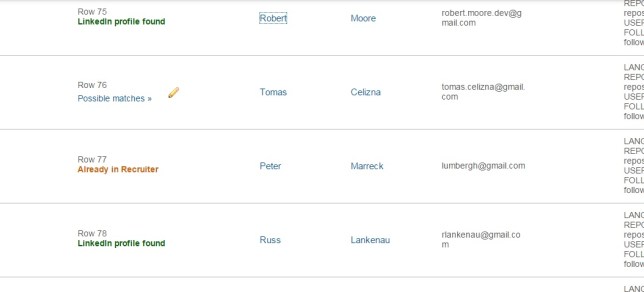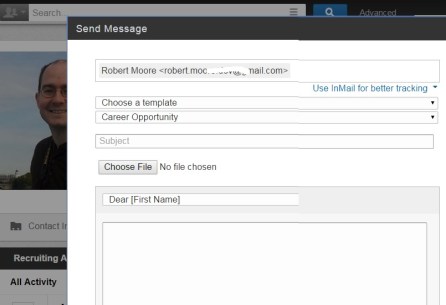
In a few days from now LinkedIn is switching to taking away the InMail points for those InMails that were not answered. There has been lots of negative reaction to the change, and rightly so. Sure, if an InMail is spam, the recipient may not answer it. But the opposite is not true: if someone doesn’t answer the InMail, it doesn’t mean that the InMail is spam: we know how busy everyone is; and it’s quite common not to answer if there’s no interest. Due to the change in the InMail policy, even those of us with expensive LinkedIn Recruiter accounts will not have enough InMails for the “normal” volume of messaging potential candidates.
There’s a lot of complaints from paid users, posted online; this includes two posts on our group: 1) Who else got the notice that on 1/1/15 LI is NOT going to credit unanswered InMails… and 2) I just completed one of Irina’s EXCELLENT webinars … – with a total of 70+comments from the upset LinkedIn customers.
It’s too bad that the service has changed to the worse, but LinkedIn still remains “the” place to source. As a database of professional profiles it still has no competition anywhere near.
Clearly, we would now benefit from knowing how to find members’ email addresses, phone numbers, or ways to message them elsewhere, even more than before. I plan to write some posts about these techniques.
In this post, I’d like to describe a suggestion for LinkedIn Recruiter users on how to alleviate the change of InMail policy. Here it is:
Use Talent Pipeline; populate your LinkedIn Recruiter account with as many external records as possible.
With the “import candidates” function in the Talent Pipeline you can add email addresses to many profiles at a time – up to 5K profiles per upload of an excel file. (When importing, you can use tags to classify the records, to help with future sourcing; or use “projects”, but then you will be limited to 2K records at a time.)
When importing an Excel file in LinkedIn Recruiter, you will see a list like this:

For the members identified by the emails addresses from the uploaded file, we’ll see the green message “LinkedIn profile found” (or the orange “Already in Recruiter” if that email was part of a previous import).
If a LinkedIn member has an attached external record with an email address – which happens as a result of importing external records – then, when sending InMails to that member, you do not use the InMail points; the message is delivered by email:

Mass-InMails in Recruiter will default to emailing those with the email addresses and InMailing the rest.
If you have LOTs of email addresses of your potential candidates uploaded, you can search on LinkedIn and continue using InMail, just as you used to, while not using as many InMail “points”.
How can you get massive volumes of email addresses for your target professional population? Uploading all email addresses from your ATS (or CRM) is a good idea. Depending on what you have access to, use sites that provide lists of emails (connect.data.com, zoominfo.com, and hiringsolved.com are some sites that I use.) Also: search for Excel files with contact info, using Google. Look into professional forums, lists of association members, etc. Create lists of professionals for those companies that have a standard email pattern. Upload all of those lists.
The more records are uploaded using Talent Pipeline, the better. If some of the uploaded email addresses are wrong or outdated, the record will simply not link to a profile, but there’s no harm in that. The activity populating your Recruiter account with email addresses can be spread over time. It will pay off, as you contact potential candidates, that you find via search on LinkedIn.
I would also like to invite you to sign up for the first webinar in 2015 on Google-Based Sourcing. The webinar offers 3 hours of training (lecture and practice); check it out!

Comments 1
The people who will find “the change in InMail refund policy” inconvenient are spammers who are counting on that low percentage response rate, because the refund still provides value for time spent.
I feel results oriented sourcers would welcome the change in InMail refund policy.
All LI is trying to do is make the product better for candidates and sourcers – and I believe this change will get sourcers to actually read the resume and customize the message. They will see better results because their targets will no longer be getting many :inMail” from spammers.
At eGrabber we use Linked for quality lead generation.
Ping me if you need more details.
[email protected]
CEO, eGrabber